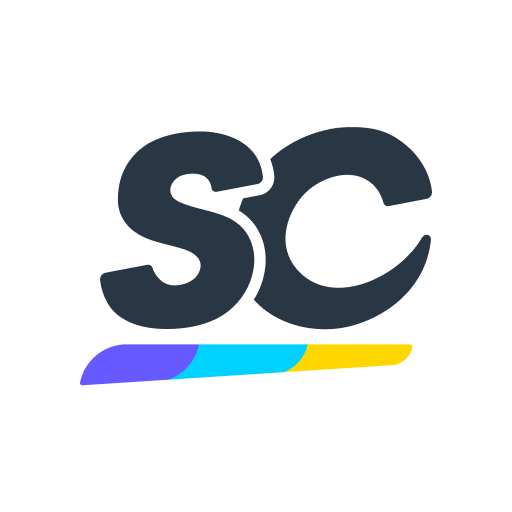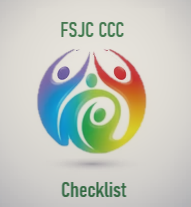Title Page
-
Site conducted
-
Conducted on
-
Inspected By
-
Accompanied By
-
Location
-
Inspection Code:
Y - Meets Standard
N - Does Not Meet Standard
N/A – Not Applicable
N/R – Not Reviewed-
ENVIRONMENTAL SAFETY
-
Daily cleaning and sanitation procedures being followed and documented <br>29 CFR 1910.141; 29 CFR 1926.51; 29 CFR 1928.110; OSHA guidance on Mitigating & prevention of COVID-19 updated 06-10-21
-
Safety board present with up-to-date information CFR 29 1903
-
Area free from clutter with materials properly stored safely to prevent fire, tripping or pest hazards <br>29 CFR 1910.22; 29 CFR 1926.25; FSH 6709.11 38.33
-
Clean drinking water provided (from a fountain or with individual drinking cups) and are the containers clean
-
Ventilation covers clean and adequate to prevent odors
-
Waste containers kept clean and emptied as needed
-
Spills cleaned up promptly
-
Floors free from carpeting damage, holes or cracks (tripping hazards) <br>29 CFR 1910.22
-
Ceilings free from damage or missing tiles
-
Lighting fully functional and in good repair <br>29 CFR 1910.269
RESTROOM FACILITIES
-
Washing facilities clean and stocked with supplies (soap, towels, toilet paper)?
-
Fixtures in toilets and washing facilities working and in good repair?
-
Tilework clean and free from damage?
-
Showers, sinks and toilets free from leaks?
STORAGE
-
Storage racks tightly assembled and free of sagging from overload or damage?
-
Storage areas kept free of tripping and fire hazards?
-
Materials stored to ensure liquids are kept below paper products?
-
Do employees have a safe way to stock and unstock the shelves?
-
Cleaning supplies properly labeled?
-
Mopping supplies properly cleaned and stored?
-
Materials stored to ensure liquids are kept below/away from paper products?
-
Universal waste stored properly, labeled and dated? 40 CFR part 273; FSH 6709-11 61.18
-
Flammable storage handled properly? (no combustibles or nonflammable items stored in cabinet. No items stored on cabinet. Plugs installed) 29 CFR 1910.106 29; CFR 1926.152 NFPA 30
HAZARDOUS CHEMICALS
-
Eye wash stations serviceable, inspected, not blocked, signposted, tested weekly and signed off? <br>NFPA 101 ANSI Z358.1 Sec5.5.2; CFR 29 1910.132
-
Procedures in place and being followed for obtaining and returning hazardous chemicals?
-
Containers of hazardous materials clearly labeled with contents?
-
Chemicals stored according to the manufacturer’s recommendations and local/national fire codes.
-
Safety Data Sheets (SDS) available, up-to-date and can students demonstrate their use?
-
Flammable or toxic chemicals kept in closed containers when not in use?
-
Personal protective clothing and equipment used (gloves, eye protection, etc.) when handling chemicals?
-
Signage prohibiting eating in areas where hazardous chemicals present?
ELECTRICAL SAFETY
-
Extension cords for temporary use with correct voltage and rated for usage? <br>CFR 1910.269
-
Power cords free of splices, taps, and damaged insulation?
- Yes
- No
- Not Applicable
-
Electrical parts on tools, equipment, building wiring, and electrical panels enclosed to prevent contact?
-
Circuit overloaded occuring? If so why?
-
Breaker boxes clear and accessible?
-
Electrical cords and equipment used at wet locations have waterproof covers or seals to keep moisture out?
-
Outlets and covers in good condition with GFCI circuits being used in wet locations? <br>CFR 1910.303(b)(1), 1910.304, 1926.404(b)(1), NEC Section 210.52
FIRST AID
-
First aid kit and BBP kit available and stocked using a list of required items? <br>1910.151(b), 1926.50( c ), ANSI/ISEA Z3-8.1, 1926.50(d)(1), PRH Exhibit 5-4
-
EPI Pen available? <br>1910.151 , 1926.50(d)(1), ANSI/ISEA Z3-8.1
-
AED machines inspected with unexpired batteries? <br>1910.151 , 1926.50(d)(1), ANSI/ISEA Z3-8.1
FIRE SAFETY
-
Extinguishers present in their correct location? PRH-5.9-R5.a-f ; CFR 1910.157(c)(4) NFPA 10
-
Extinguishers hung or stand mounted, unobscured, unobstructed and freely visible? CFR 1910.157 (c)(1) NFPA 10
-
Extinguishers with pressure gauges show correct pressure? PRH 5.9-R5.a-f; CFR 1910.157.(c) (4) NFPA 10
-
Extinguishers free from signs of corrosion (incl. tap-test)? PRH-5.9R5.a-f; CFR 1910.157(f)(2)(iii) NFPA 10
-
Alarm pull stations and smoke detectors in good working order? <br>CFR 29 1910.164
-
Extinguishers tagged, serviced and inspected by the building manager or designee? CFR 29 1910.157( c )(1), NFPA 10
-
Fire alarm panel in good working order? NFPA 72 NFPA 70 29 CFR. 164-165; 1926.150
EMERGENCY EVACUATION & EXITS
-
Occupancy loads posted with adequate exit discharge routes that lead outside? <br> 20 CFR 1910.36 (c)
-
Evacuation routes posted in each area with two-colored coding and in good repair? <br>29 CFR 1910.38(c)(2), PRH 5.1R17(b)(6)(7)
-
Exits clearly marked and doors that could be mistaken for a way of exit marked “Not an Exit” or with the name of the adjoining room?
-
Exits and exit paths clear and free of obstructions? <br>CFR 29 1910.36, 1910.37, NFPA 101
-
Emergency lighting properly illuminated? 29 CFR 1910.36, 1910.37, NFPA 101
-
Fire alarm panel functioning properly? <br>29 CFR 1910.164(b)(2), NFPA 72, PRH 5.1 R17(3)
-
Exits opened from the inside without a key?
-
Documented emergency evacuation drill within the last 30 days.
TOOLS AND EQUIPMENT
-
JHA available for operations being performed? <br>29 CFR 1910.132(d)(2); FSH 6709.11 -11.12
-
Fall protection equipment stored properly with up-to date inspections? (i.e. harness, lanyards) 29 CFR 1910.140; 29 CFR 1926.501
-
Hand tools serviceable? <br>29 CFR 1910.242 (a); 29 CFR 1926.300(a)
-
Power tools have guards? <br>29 CFR 1910.243; 29 CFR 1926.300 (b) (1); FSH 6709.11 43.51. 6
-
Power tool cords and plugs in good condition? 29 CFR 1910.334(a)(1) 1910.334 (a) (2); 1910.334; 1910.334(a092)(ii)
-
Unserviceable broken tools/equipment removed from service? <br>29 CFR 1910.242; 1926.300 (a); FSH 6709-11-43.04. 2
-
Lockout/tagout devices identifiable? 29 CFR 1910.147(c)(5)(ii)(D)
-
Lockouts/tagouts used as needed? <br> PRH-5.1-R28.a-c; 29 CFR 1910.147
MACHINE GUARDING
-
Machinery and equipment serviceable and properly maintained? H&SC 43.12 H&SC 43.51.19
-
Sufficient clearance provided around machines for safe operations, set up and servicing, material handling, and waste removal? 29 CFR 1910.213(s)(6) H&SC 39.74.5, 7
-
Equipment and machinery securely placed and anchored to prevent tipping or other movement that could result in personal injury? 29 CFR 1910.212(b) H&SC 39.74.4
-
Belts, pulleys, gears, shafts, and moving parts properly guarded? Guards and safety devices functional, adjusted, and in place? 29 CFR 1910.213(a)(9) 29 CFR 1910.219(d) 29 CFR 1910.219(e); H&SC 39.74.6; H&SC 39.74b.3
LADDERS
-
Ladder safety training? CFR 1910.23L
-
Ladder limited to temporary use? <br>H&SC 33.11
-
Portable rung ladders used to access elevated surfaces, does the ladder extend at least 3 feet above that surface? 29 CFR 1910.26(a)(1)(iii) 29 CFR 1910.26(a)(1)(iii
-
Ladders inspected for defects before use each day and after any occurrence that could damage the ladder? H&SC 33.11a; CFR 1910.23
-
Nonskid safety feet on all ladders except step ladders? 29 CFR 1910.25(d)(2)(xix)
PERSONAL PROTECTIVE EQUIPMENT
-
Eye and face protection worn as required? CFR 29 1910.132
-
Hearing protection worn as required? CFR 29 1910.132
-
High noise areas warning signs posted? CFR 29 1910.132
-
Footwear in good condition, properly worn and appropriate for tasks being performed?
-
Personal protective equipment in good condition? CFR 29 1910.132
Sign Off
-
Name and Signature
Exterior
-
General appearance weeded, clean and without clutter?
-
Outside trash containers clean and in good repair?
-
Sidewalks clean, free from hazards (snow/ice buildup) and in good repair?
-
Doors secure and in good repair?
-
Paint in good repair?
-
Are all the windows and screens intact and clean?









